Function Replacement Decision-Making for Parking Space Renewal Based on Association Rules Mining
Abstract
:1. Introduction
1.1. Shared Autonomous Vehicles and Parking Space Renewal
1.2. Function Replacement for Parking Space Renewal
1.3. Research Purpose
- (1)
- It analyzes the urban function organization pattern at the microscale level by calculating the co-locational relationships between parking spaces and other POI types;
- (2)
- It establishes a new function replacement decision model for the renewal of urban parking spaces, based on the association rules of existing urban functions.
2. Literature Review
2.1. Urban Function Positioning and Replacement
2.2. Methods for Parking Space Reuse
2.3. Association Rule Mining of Urban Function at the Microscale
3. Materials and Methods
3.1. Research Area
3.2. Data Source
3.3. Research Process
3.3.1. Basic Characteristics and Spatial Statistics
3.3.2. Association Mining and Function Replacement
3.4. Method of Mining Association Rules
3.4.1. Apriori
3.4.2. Two-Step Clustering
3.4.3. Cosine Similarity
3.4.4. GIS and Relevant Statistical Methods for Correlation Analysis
4. Results and Analysis
4.1. General Features of the Analysis of Parking Space
4.1.1. Description on Characteristics of Parking Spaces
4.1.2. Spatial Distribution of Parking Spaces
4.1.3. Co-Location Relationship of Parking Space and POIs
4.2. Analysis of Function Replacement
4.2.1. Two-Step Clustering Results
4.2.2. Function Association Rules
4.2.3. Replacement Results Based on the Association Rules
5. Discussion
5.1. Decision-Making of Function Replacement of Parking Space
5.2. Implications for Renewal of Urban Systematic Space
5.3. Limits and Prospects
6. Conclusions
- (1)
- The overall spatial distribution of the scale and price of the parking lot presents a “core-periphery” pattern; while the general distribution pattern of parking space type is a “city center-peripheral cluster”;
- (2)
- For various parking prices, scales, and affiliation building types, the spatial co-location relationships between parking spaces and POIs are different, and the global correlation between parking lots and POIs is relatively weak;
- (3)
- In the eight grouped and full sample sets, based on a support degree of 25%, a confidence degree of 90%, and a lift degree of one, a rule set composed of 6079 rules was obtained, of which 1151 rules were with the first item of no less than five;
- (4)
- The majority of existing parking spaces, most of which are affiliated with office buildings, are suitable for being replaced into the function of catering services. Those for companies and commercial housing are the second and third, respectively;
- (5)
- The renewal process for urban parking space systems needs to integrate macro- and micro-perspectives and coordinate short- and long-term needs. The decision model based on the urban function association pattern provides a renewal method for a fragmented urban systematic space.
Author Contributions
Funding
Acknowledgments
Conflicts of Interest
References
- Silva, D.; Földes, D.; Csiszár, C. Autonomous vehicle use and urban space transformation: A scenario building and analysing method. Sustainability 2021, 13, 3008. [Google Scholar] [CrossRef]
- Duarte, F.; Ratti, C. The impact of autonomous vehicles on cities: A review. J. Urban Technol. 2018, 25, 3–18. [Google Scholar] [CrossRef]
- Victoria Transportation Policy Institute. Parking Evaluation: Evaluating Parking Problems, Solutions, Costs, and Benefits; Victoria Transportation Policy Institute: Melbourne, Canada, 2011. [Google Scholar]
- Choi, C.Q. How Self-Driving Cars Might Transform City Parking. 2019. Available online: https://spectrum.ieee.org/autonomous-parking (accessed on 6 December 2021).
- Schoettle, B.; Sivak, M. Potential Impact of Self-Driving Vehicles on Household Vehicle Demand and Usage; Transportation Research Institute: Ann Arbor, MI, USA, 2015. [Google Scholar]
- Parkin, J.; Clark, B.; Clayton, W.; Ricci, M.; Parkhurst, G. Autonomous vehicle interactions in the urban street environment: A research agenda. Proc. Inst. Civ. Eng.-Munic. Eng. 2018, 171, 15–25. [Google Scholar] [CrossRef]
- Xia, B.; Wu, J.; Wang, J.; Fang, Y.; Shen, H.; Shen, J. Sustainable renewal methods of urban public parking spaces under the scenario of shared autonomous vehicles (SAV): A review and a proposal. Sustainability 2021, 13, 3629. [Google Scholar] [CrossRef]
- Siddique, P.J.; Gue, K.R.; Usher, J.S. Puzzle-based parking. Transp. Res. Part C-Emerg. Technol. 2021, 127, 103112. [Google Scholar] [CrossRef]
- Simons, R.A. When would driverless vehicles make downtown parking unsustainable, and where would the driverless car fleet rest during the day? JOSRE 2018, 10, 3–32. [Google Scholar] [CrossRef]
- Shoup, D.C. The High Cost of Free Parking. American Planning Association Planners Press: Chicago, IL, USA, 2005. [Google Scholar]
- Wang, J.; Zhang, X. A view on U.S. parking policies. Urban Transp. China 2011, 9, 53–60. [Google Scholar]
- ITE. Parking Generation, 4th ed.; Institute of Transportation Engineers: Washington, DC, USA, 2010. [Google Scholar]
- Asia Development Bank. Parking Policy in Asia Cities. 2011. Available online: https://www.adb.org/sites/default/files/publication/28935/parking-policy-asia.pdf (accessed on 6 December 2021).
- Mumford, L. The City in History: Its Origins, Its Transformations, and Its Prospects; Mariner Books: New York, NY, USA, 1968. [Google Scholar]
- Morawska, L.; Miller, W.; Riley, M.; Vardoulakis, S.; Zhu, Y.-G.; Marks, G.B.; Garnawat, P.; Kumar, P.; Thynell, M. Towards Urbanome the genome of the city to enhance the form and function of future cities. Nat. Commun. 2019, 10, 4014. [Google Scholar] [CrossRef] [PubMed]
- Holtslag-Broekhof, S. Urban land readjustment: Necessary for effective urban renewal? Analysing the dutch quest for new legislation. Land Use Policy 2018, 77, 821–828. [Google Scholar] [CrossRef]
- Mekdjian, S. Urban artivism and migrations. Disrupting spatial and political segregation of migrants in European cities. Cities 2018, 77, 39–48. [Google Scholar] [CrossRef] [Green Version]
- The State Council of The People’s Republic of China. Report of the Central City Work Conference; The State Council of The People’s Republic of China: Beijing, China, 2015.
- Sui, H.; Yang, X.; Xu, S.; Zhou, D. Progress and hot research on urban functional space renewal in the new era. Trop. Geogr. 2020, 40, 1150–1160. [Google Scholar]
- Schumacher, E.F. Small Is Beatiful: Economics as If People Mattered; Harper & Row: New York, NY, USA, 1973. [Google Scholar]
- Lerner, J. Urban Acupuncture; Island Press: New York, NY, USA, 2016. [Google Scholar]
- Casanova, H.; Hernandez, J. Public Space Acupuncture; Actar: New York, NY, USA, 2015. [Google Scholar]
- Houghton, K.; Foth, M.; Miller, E. Urban acupuncture: Hybrid social and technological practices for hyperlocal placemaking. J. Urban Technol. 2015, 22, 3–19. [Google Scholar] [CrossRef]
- Ryan, C. Eco-Acupuncture: Designing and facilitating pathways for urban transformation, for a resilient low-carbon future. J. Clean. Prod. 2013, 50, 189–199. [Google Scholar] [CrossRef]
- Ziegenfuss, K. Constructing Use in Surface Parking Lots: Strategies for Enhancing Lots as Part-Time Public Spaces. Ph.D. Thesis, Massachusetts Institute of Technology, Cambridge, MA, USA, 2009. [Google Scholar]
- Simons, R.A.; Kline, J. 11 urban adaptive reuse potential from the architect’s perspective. In Driverless Cars, Urban Parking and Land Use; Routledge: New York, NY, USA, 2020. [Google Scholar]
- Adamo, J. Data Ming for Association Rules and Sequential Patterns: Sequential and Parallel Algorithms; Springer: New York, NY, USA, 2012. [Google Scholar]
- Gkoulalas-Divanis, A.; Verykios, V.S. Assoication Rule Hiding for Data Ming; Springer: New York, NY, USA, 2010. [Google Scholar]
- Agrawal, R.; Imielinski, T.; Swami, A. Mining association rules between sets of items in large databases. In Proceedings of the 1993 ACM SIGMOD International Conference on Management of Data, Washington, DC, USA, 25–28 May 1993; pp. 207–216. [Google Scholar]
- Shekhar, S.; Huang, Y. Discovering spatial co-location patterns: A summary of results. In International Symposium on Spatial and Temporal Databases; Springer: Berlin/Heidelberg, Germany, 2001; pp. 236–256. [Google Scholar]
- Cai, J.N.; Liu, Q.L.; Deng, M.; Tang, J.B.; He, Z.J. Adaptive detection of statistically significant regional spatial co-location patterns. Comput. Environ. Urban Syst. 2018, 68, 53–63. [Google Scholar] [CrossRef]
- Chen, Y. Forecasting Approach for Urban Function Nodes Based on Markov Chain and Neural Network: Taking Nanjing for an Instance. Master’s Thesis, Southeast University, Nanjing, China, 2019. [Google Scholar]
- Yu, W.; Ai, T.; Zhou, Q. Regional co-location pattern mining and scoping from urban facility POI. Geogr. Geo-Inf. Sci. 2015, 31, 6–11. [Google Scholar]
- Chen, Y.; Chen, X.; Liu, Z.; Li, X. Understanding the spatial organization of urban functions based on co-location patterns mining: A comparative analysis for 25 Chinese cities. Cities 2020, 97, 102563. [Google Scholar] [CrossRef]
- Jiang, J.; Dai, F.; Zhang, J. Comparative study of urban functional structure based on POI data: A case study of Beijing and Shanghai. Mod. Urban Res. 2020, 7, 42–50. [Google Scholar]
- 2021 Hangzhou Statistical Yearbook. Available online: http://tjj.hangzhou.gov.cn/art/2021/11/15/art_1229453592_3968147.html (accessed on 6 December 2021).
- The State Council of The People’s Republic of China. New Generation Artificial Intelligence Development Plan; The State Council of The People’s Republic of China: Beijing, China, 2017.
- Ma, Z. Hangzhou at Forefront of Digital Economy. Available online: http://www.chinadaily.com.cn/a/201909/17/WS5d8075a4a310cf3e3556bed1.html (accessed on 6 December 2021).
- Duan, Y.; Liu, Y.; Liu, X.; Wang, H. Identification of polycentric urban structure of central Chongqing using points of interest big data. J. Nat. Resour. 2018, 33, 788–800. [Google Scholar]
- Xue, B.; Xiao, X.; Li, J.; Xie, X. Analysis of spatial economic structure of Northeast China cities based on points of interest big data. Sci. Geogr. Sin. 2020, 40, 691–700. [Google Scholar]
- Shen, Y.; Chai, Y. Daily activity space of suburban mega-community residents in Beijing based on GPS data. Acta Geogr. Sin. 2013, 68, 506–516. [Google Scholar]
- She, Y.; Chai, Y. Study on commuting flexibility of residents based on GPS data: A case study of suburban mega-communities in Beijing. Acta Geogr. Sin. 2012, 67, 733–744. [Google Scholar]
- Liao, W.; Nie, X. Spatial association analysis for urban service based on big data. Sci. Geogr. Sin. 2017, 37, 1310–1317. [Google Scholar]
- Shen, Q. Research on Sequence Pattern Mining and Rule Matching Prediction Based on Improved Apriori Algorithm. Master’s Thesis, Beijing University of Posts and Telecommunications, Beijing, China, 2016. [Google Scholar]
- Liu, P.; Li, Z.; Zhao, Y. Network fault diagnosis expert system based on extended production rules. J. Xi’an Jiaotong Univ. 2004, 38, 783–786. [Google Scholar]
- Liu, L.; Yu, S.; Wei, X.; Ning, Z. An improved Apriori-based algorithm for friends recommendation in microblog. Int. J. Commun. Syst. 2018, 31, e3453. [Google Scholar] [CrossRef]
- Park, S.H.; Synn, J.; Kwon, O.H.; Sung, Y. Apriori-based text mining method for the advancement of the transportation management plan in expressway work zones. J. Supercomput. 2017, 74, 1283–1298. [Google Scholar] [CrossRef]
- Gao, Y.; Gao, J.; Chen, J.; Xu, Y.; Zhao, J. Regionalizing aquatic ecosystems based on the river subbasin taxonomy concept and spatial clustering techniques. Int. J. Environ. Res. Public Health 2011, 8, 4367–4385. [Google Scholar] [CrossRef] [PubMed]
- Breiman, L. Random forests. Mach. Learn. 2001, 45, 5–32. [Google Scholar] [CrossRef] [Green Version]
- Sun, S. Modern Urban Planning Theories. China Architecture Publishing & Media Co., Ltd.: Beijing, China, 2007. [Google Scholar]
- Rezaei, M. Reviewing Design Process Theories: Discourses in Architecture, Urban Design and Planning Theories; Springer: New York, NY, USA, 2020. [Google Scholar]
- Tahvilzadeh, N.; Montin, S.; Cullberg, M. Functions of sustainability: Exploring what urban sustainability policy discourse “does” in the Gothenburg Metropolitan Area. Local Environ. 2017, 22, 66–85. [Google Scholar] [CrossRef] [Green Version]
- Liu, Y.; Zhu, A.; Wang, J.; Li, W.; Hu, G.; Hu, Y. Land-use decision support in brownfield redevelopment for urban renewal based on crowd sourced data and a presence-and-background learning (PBL) method. Land Use Policy 2019, 88, 104188. [Google Scholar] [CrossRef]
- Frantal, B.; Greer-Wootten, B.; Klusáček, P.; Krejčí, T.; Kunc, J.; Martinát, S. Exploring spatial patterns of urban brownfields regeneration: The case of Brno, Czech Republic. Cities 2015, 44, 9–18. [Google Scholar] [CrossRef]
- Zambon, I.; Serra, P.; Salvati, L. The (Evolving) urban footprint under sequential building cycles and changing socio-demographic contexts. Environ. Impact Assess. Rev. 2019, 75, 27–36. [Google Scholar] [CrossRef]
- Nesticò, A.; Sica, F. The sustainability of urban renewal projects: A model for economic multi-criteria analysis. J. Prop. Invest. Finance 2017, 35, 397–409. [Google Scholar] [CrossRef]
- Fistola, R.; Gargiulo, C.; Battarra, R.; La Rocca, R.A. Sustainability of urban functions: Dealing with tourism activity. Sustainability 2019, 11, 1071. [Google Scholar] [CrossRef] [Green Version]
- Bottero, M.; Bragaglia, F.; Caruso, N.; Datola, G.; Dell’Anna, F. Experimenting community impact evaluation (CIE) for assessing urban regeneration programmes: The case study of the area 22@ Barcelona. Cities 2020, 99, 102464. [Google Scholar] [CrossRef]
- Zheng, W.; Shen, G.Q.; Wang, H.; Hong, J.; Li, Z. Decision support for sustainable urban renewal: A multi-scale model. Land Use Policy 2017, 69, 361–371. [Google Scholar] [CrossRef] [Green Version]
- Bai, X.; Tong, M. Micro urban regeneration: From the networks to nodes and vice versa. Archit. J. 2020, 2020, 8–14. [Google Scholar]
- Xia, B.; Fang, Y.; Shen, H.; Shen, J.; Pan, S. Sustainable renewal of underground parking space in the scenario of shared autonomous vehicles. Buildings 2020, 12, 4. [Google Scholar] [CrossRef]
- Qiao, Y.-K.; Peng, F.-L.; Sabri, S.; Rajabifard, A. Low carbon effects of urban underground space. Sustain. Cities Soc. 2019, 45, 451–459. [Google Scholar] [CrossRef]
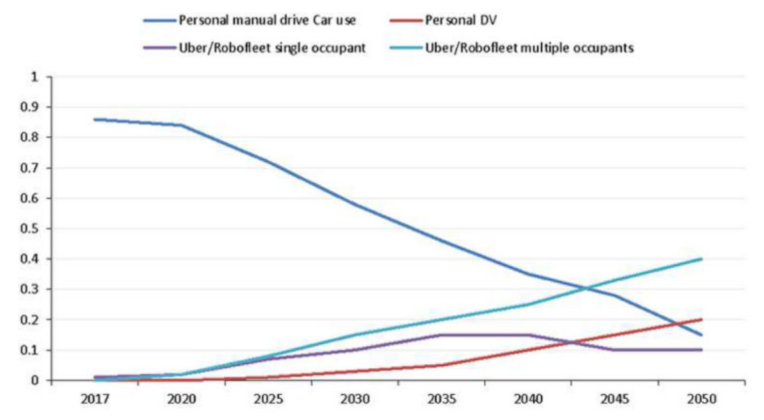
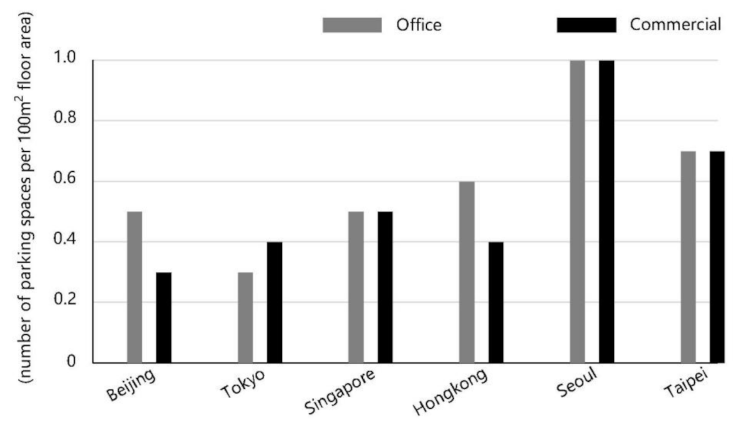



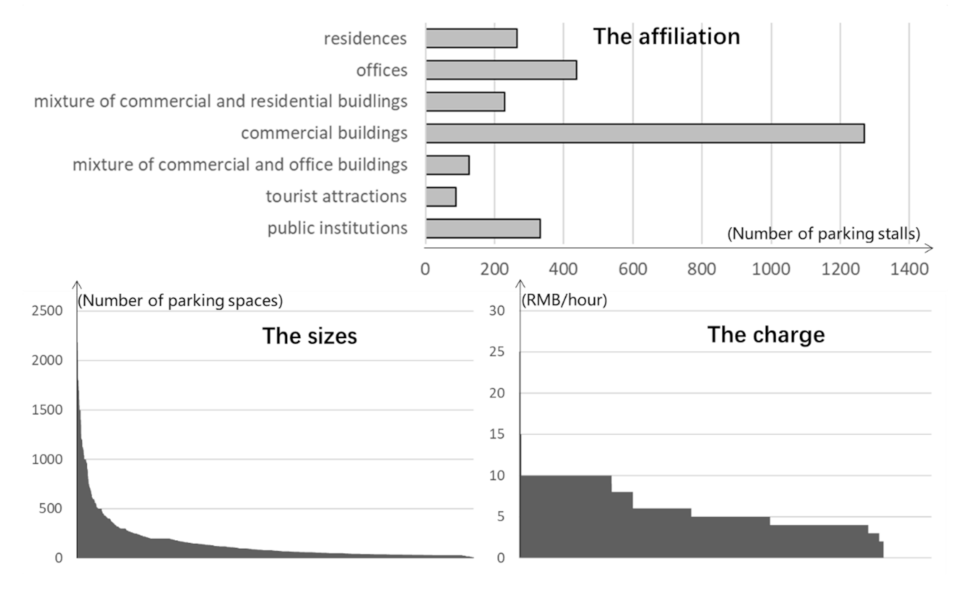
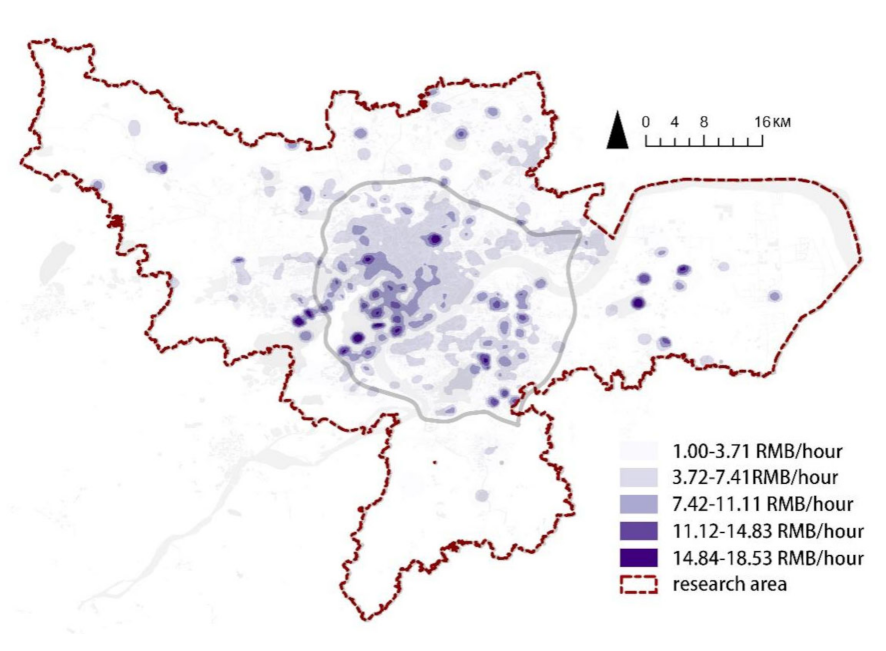
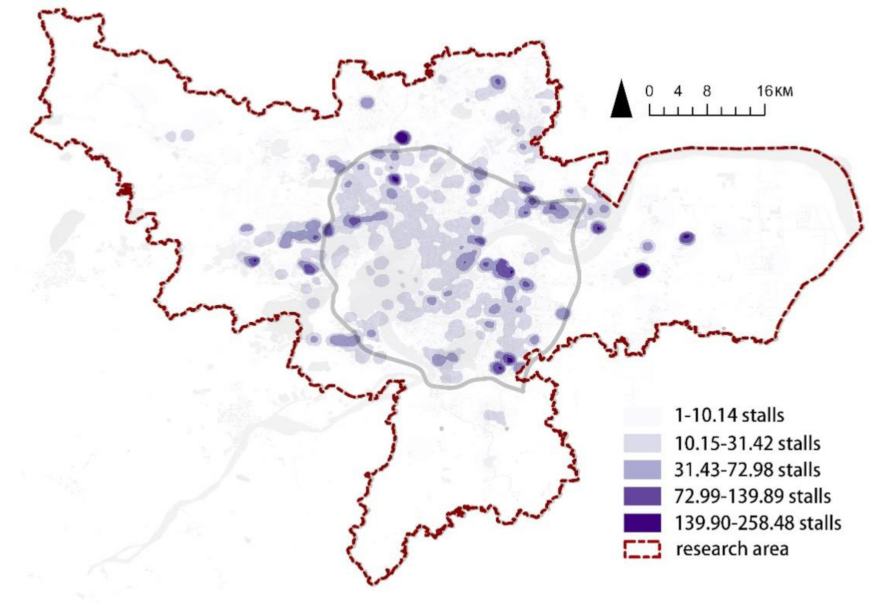
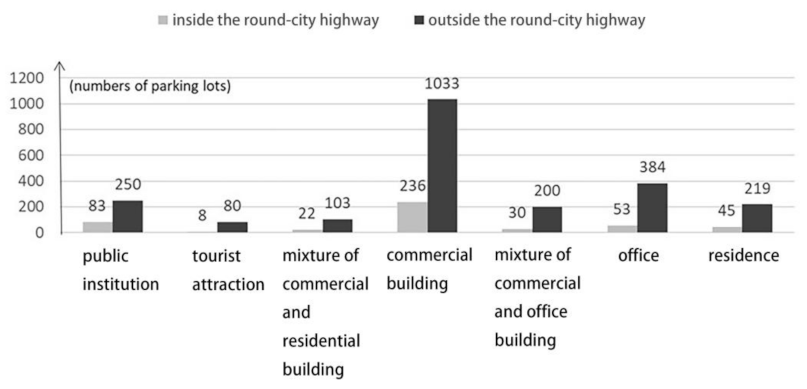

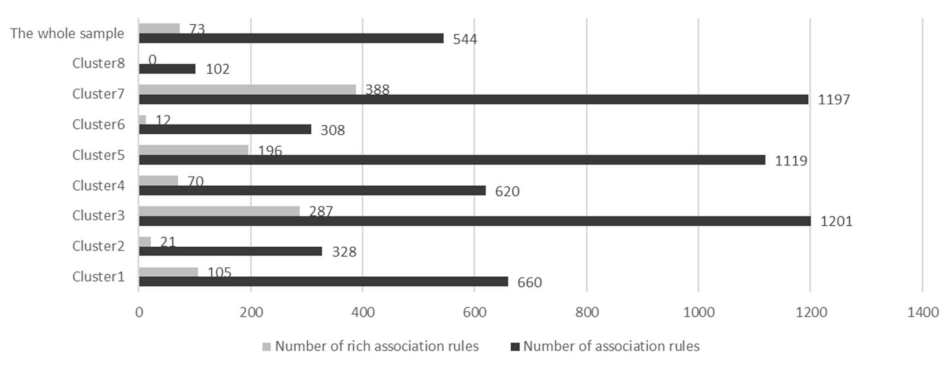
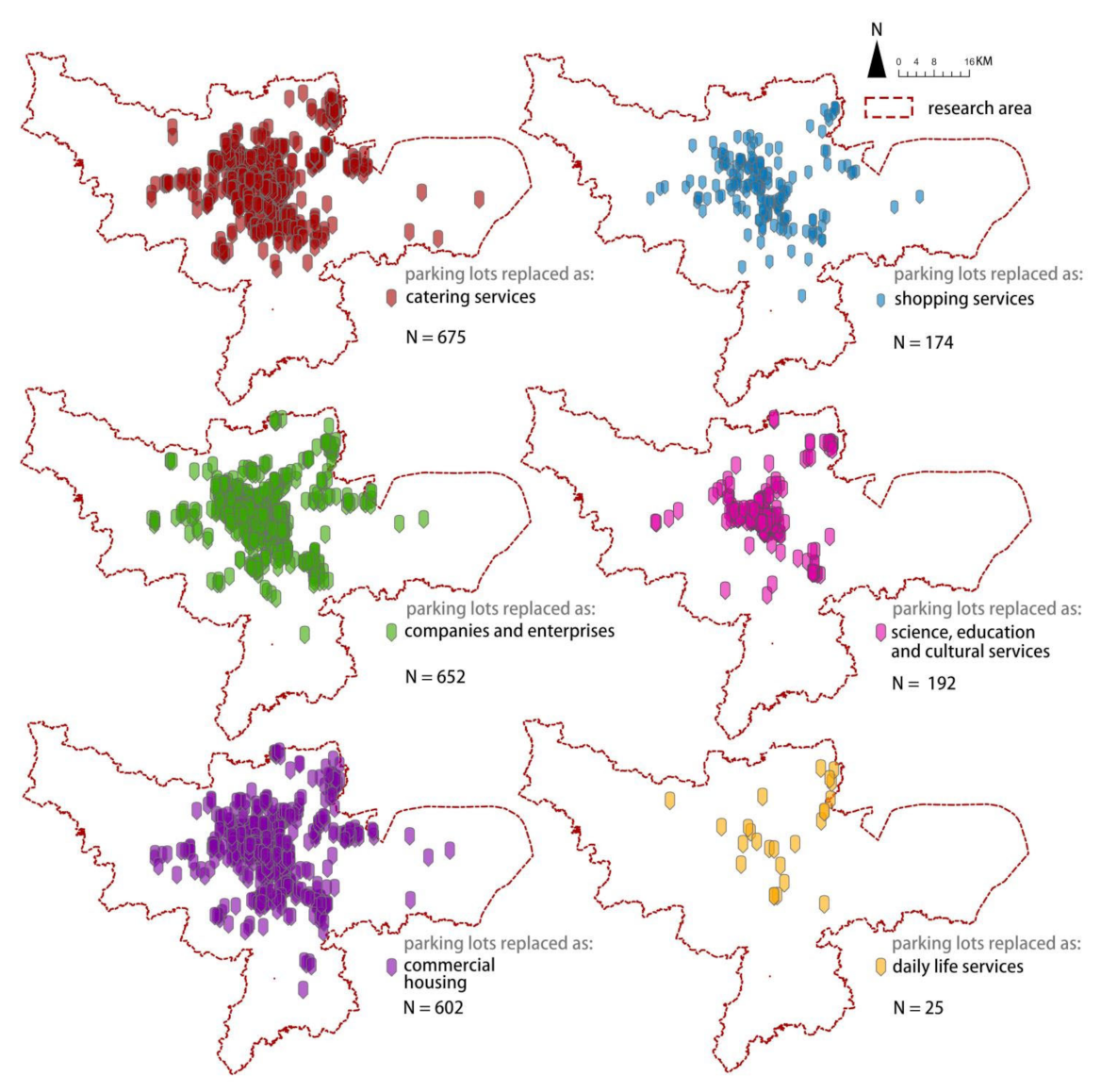
| Input Variable | Variable Type and Assignments | Sample Size | Numbers |
|---|---|---|---|
| accommodation services | virtual variable, if it exists = 1, else = 0 | 2320 | 839 |
| car services | virtual variable, if it exists = 1, else = 0 | 2320 | 640 |
| catering services | virtual variable, if it exists = 1, else = 0 | 2320 | 1499 |
| commercial residence | virtual variable, if it exists = 1, else = 0 | 2320 | 1413 |
| companies and enterprises | virtual variable, if it exists = 1, else = 0 | 2320 | 1596 |
| daily life services | virtual variable, if it exists = 1, else = 0 | 2320 | 1749 |
| financial insurance services | virtual variable, if it exists = 1, else = 0 | 2320 | 635 |
| government agencies and social organizations | virtual variable, if it exists = 1, else = 0 | 2320 | 1017 |
| medical care services | virtual variable, if it exists = 1, else = 0 | 2320 | 927 |
| public facilities | virtual variable, if it exists = 1, else = 0 | 2320 | 642 |
| scenic spots | virtual variable, if it exists = 1, else = 0 | 2320 | 303 |
| science, education and cultural services | virtual variable, if it exists = 1, else = 0 | 2320 | 1287 |
| shopping services | virtual variable, if it exists = 1, else = 0 | 2320 | 1722 |
| sports and leisure services | virtual variable, if it exists = 1, else = 0 | 2320 | 980 |
| Input Variable | Variable Type | Sample Size | Average | Standard Deviation |
|---|---|---|---|---|
| affiliation | label | 2320 | - | - |
| size | numerical | 2320 | 155.47 | 229.63 |
| charge | numerical | 2320 | 5.62 | 4.27 |
| Input Variables | Variable Types |
|---|---|
| accommodation services | virtual variable, if it exists = 1, else = 0 |
| car services | virtual variable, if it exists = 1, else = 0 |
| catering services | virtual variable, if it exists = 1, else = 0 |
| commercial housing | virtual variable, if it exists = 1, else = 0 |
| companies and enterprises | virtual variable, if it exists = 1, else = 0 |
| daily life services | virtual variable, if it exists = 1, else = 0 |
| financial insurance services | virtual variable, if it exists = 1, else = 0 |
| government agencies and social organizations | virtual variable, if it exists = 1, else = 0 |
| medical care services | virtual variable, if it exists = 1, else = 0 |
| public facilities | virtual variable, if it exists = 1, else = 0 |
| scenic spots | virtual variable, if it exists = 1, else = 0 |
| science, education and cultural services | virtual variable, if it exists = 1, else = 0 |
| shopping services | virtual variable, if it exists = 1, else = 0 |
| sports and leisure services | virtual variable, if it exists = 1, else = 0 |
| POI Types | Charging Price | ||
|---|---|---|---|
| Low | Medium | High | |
| accommodation services | 0.80 | 0.86 | 0.11 |
| car services | 0.26 | 0.76 | 0.61 |
| catering services | 0.26 | 0.88 | 0.37 |
| commercial residence | 0.96 | 1.00 | 0.01 |
| companies and enterprises | 0.11 | 0.98 | 0.52 |
| daily life services | 0.01 | 0.96 | 0.00 |
| financial insurance services | 0.66 | 0.89 | 0.20 |
| government agencies and social organizations | 0.18 | 1.00 | 0.01 |
| medical care services | 0.13 | 0.94 | 0.48 |
| public facilities | 0.44 | 0.01 | 0.32 |
| scenic spots | 0.25 | 0.56 | 0.24 |
| science, education and cultural services | 0.82 | 1.00 | 0.84 |
| shopping services | 0.51 | 0.54 | 0.45 |
| sports and leisure services | 0.80 | 0.98 | 0.04 |
| POI Types | Size | ||
|---|---|---|---|
| Small | Medium | Large | |
| accommodation services | 0.21 | 0.92 | 0.49 |
| car services | 0.67 | 0.62 | 0.45 |
| catering services | 0.66 | 0.97 | 0.56 |
| commercial housing | 0.98 | 0.26 | 0.87 |
| companies and enterprises | 0.88 | 0.28 | 0.85 |
| daily life services | 0.53 | 0.86 | 0.79 |
| financial insurance services | 0.00 | 0.56 | 0.71 |
| government agencies and social organizations | 0.75 | 0.17 | 0.98 |
| medical care services | 0.96 | 0.14 | 0.88 |
| public facilities | 0.81 | 0.51 | 0.82 |
| scenic spots | 1.00 | 0.77 | 0.90 |
| science, education and cultural services | 0.94 | 0.87 | 0.94 |
| shopping services | 0.61 | 0.61 | 0.77 |
| sports and leisure services | 0.35 | 0.71 | 0.75 |
| POI Types | Affiliation | ||||||
|---|---|---|---|---|---|---|---|
| CM | OB | PI | RD | CR | CO | TA | |
| accommodation services | 1.00 | 1.00 | 0.77 | 0.98 | 0.82 | 0.70 | 0.20 |
| car services | 0.43 | 0.83 | 0.14 | 0.03 | 0.06 | 0.99 | 0.14 |
| catering services | 0.33 | 0.64 | 0.42 | 0.66 | 0.75 | 0.35 | 0.06 |
| commercial housing | 0.06 | 0.70 | 0.23 | 0.36 | 0.47 | 0.31 | 0.27 |
| companies and enterprises | 0.81 | 0.71 | 0.51 | 1.00 | 0.92 | 0.58 | 0.22 |
| daily life services | 0.74 | 0.99 | 0.48 | 0.87 | 0.89 | 0.03 | 0.14 |
| financial insurance services | 0.68 | 0.78 | 0.35 | 0.72 | 0.48 | 0.94 | 0.16 |
| government agencies and social organizations | 0.17 | 0.92 | 0.04 | 0.99 | 0.98 | 0.32 | 0.25 |
| medical care services | 0.24 | 0.04 | 0.51 | 0.84 | 0.77 | 0.45 | 0.03 |
| public facilities | 0.65 | 0.60 | 0.43 | 0.99 | 0.79 | 0.49 | 0.15 |
| scenic spots | 0.03 | 0.69 | 0.32 | 0.16 | 0.45 | 0.58 | 0.92 |
| science, education, and cultural services | 0.43 | 0.78 | 0.35 | 0.94 | 0.20 | 0.28 | 0.15 |
| shopping services | 0.87 | 0.30 | 0.56 | 0.65 | 0.75 | 0.01 | 0.07 |
| sports and leisure services | 0.03 | 0.88 | 0.85 | 0.84 | 0.73 | 0.82 | 0.27 |
| Antecedents | Consequent | Support(%) | Confidence(%) | Cluster |
|---|---|---|---|---|
| SEC,CE,CS,CR,SS | DLS | 41.91 | 99.01 | 1 |
| SEC,CE,CS,CR,DLS | SS | 41.49 | 100.00 | 1 |
| SLS,CR,CS,SS,DLS | CE | 29.86 | 90.36 | 2 |
| SLS,CE,CS,SS,DLS | CR | 29.86 | 90.36 | 2 |
| SEC,CR,CS,SS,DLS | CE | 40.11 | 90.97 | 3 |
| SEC,CE,CS,SS,DLS | CR | 39.28 | 92.91 | 3 |
| GASO,CR,CE,SS,DLS | CS | 32.21 | 90.70 | 4 |
| SEC,CR,CS,SS,DLS | CE | 31.84 | 91.76 | 4 |
| SEC,CS,CE,LS,SS | CR | 39.26 | 93.68 | 5 |
| SEC,CR,CS,LS,SS | CE | 38.84 | 94.68 | 5 |
| SEC,CS,CE,SS,DLS | CR | 32.13 | 90.00 | 6 |
| SEC,CR,CS,SS,DLS | CE | 31.73 | 91.14 | 6 |
| SEC,CE,CS,CR,SS | DLS | 41.91 | 99.01 | 7 |
| SEC,CE,CS,CR,DLS | SS | 41.49 | 100.00 | 7 |
| SEC,CR,CS,SS,DLS | CE | 35.56 | 91.15 | 8 |
| SEC,CR,CE,SS,DLS | CS | 34.35 | 94.35 | 8 |
| Most Relevant Rules | Replacement Function |
|---|---|
| Affiliation = office and Size = (515,712] and Charge = (5.50,25.00] | CE |
| Affiliation = office and Size = (1100,2183] and Charge = [0.00,7.00] | CR |
| Affiliation = mixture of commercial and residential building and Charge = [5.50,9.00] | CR |
| Affiliation = tourist attraction and Charge = [0.00,4.50] | CR |
| Affiliation = public institution and Charge = (1.00,2.50] | SEC |
| Affiliation = commercial building and Size (0,485] and Charge = (8.50,25.00] | SEC |
| Affiliation = commercial building and Price = (8.50,25.00] | SEC |
| Affiliation = public institutions and Size = (658,2183] and Charge = (9.00,25.00] | SS |
| Affiliation = office and Size = (242,2183] and Charge = (7.00,9.00] | SS |
| Affiliation = commercial building and Size = (419,2183] and Charge = (7.00,8.00] | SS |
| Affiliation = office and Charge = (9.00,25.00] | CS |
| Affiliation = office and Size = (379,2183] and Charge = (5.500,25.00] | CS |
| Affiliation = office and Size = (419,2183] and Charge = (9.00,25.00] | CS |
| Affiliation = residence and Size = (93,638] and Charge = (9.00,25.00] | DLS |
Publisher’s Note: MDPI stays neutral with regard to jurisdictional claims in published maps and institutional affiliations. |
© 2022 by the authors. Licensee MDPI, Basel, Switzerland. This article is an open access article distributed under the terms and conditions of the Creative Commons Attribution (CC BY) license (https://creativecommons.org/licenses/by/4.0/).
Share and Cite
Xia, B.; Ruan, Y. Function Replacement Decision-Making for Parking Space Renewal Based on Association Rules Mining. Land 2022, 11, 156. https://doi.org/10.3390/land11020156
Xia B, Ruan Y. Function Replacement Decision-Making for Parking Space Renewal Based on Association Rules Mining. Land. 2022; 11(2):156. https://doi.org/10.3390/land11020156
Chicago/Turabian StyleXia, Bing, and Yichen Ruan. 2022. "Function Replacement Decision-Making for Parking Space Renewal Based on Association Rules Mining" Land 11, no. 2: 156. https://doi.org/10.3390/land11020156
APA StyleXia, B., & Ruan, Y. (2022). Function Replacement Decision-Making for Parking Space Renewal Based on Association Rules Mining. Land, 11(2), 156. https://doi.org/10.3390/land11020156






